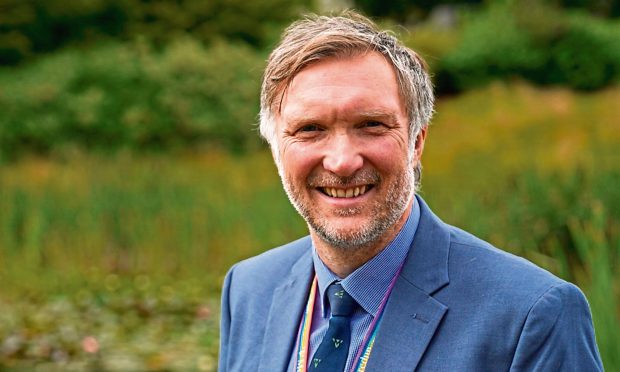The important role which improved animal health and welfare can play in helping to meet Scotland’s net-zero targets and food security aspirations was yesterday emphasised by the new head of the Moredun Research Institute (MRI), Dr Tom McNeilly.
Having taken up the dual role of scientific director at the MRI and chief executive of the Moredun Foundation in early October, after 18 years with the Institute, Dr McNeilly took the tiller following the retirement of Professor Julie Fitzpatrick who had led the organisations for 20 years.
Keen to assure the industry that looking for practical solutions to needs of the farming industry would remain the focus of Moredun’s work, he said the livestock sector was facing up to considerable changes as new and important obligations were added to the sector’s traditional role of food production.
Speaking at a press briefing he said that climate change targets meant that there was now a considerable focus on the amount of enteric methane produced by cattle and sheep, adding that the work at Moredun could play an important part in helping to address this issue as well as food security and biodiversity enhancement.
He said: “Moredun, with its focus on improving livestock health and welfare through the development of vaccines, diagnostic tests and disease control strategies, can play a key role in helping the farming sector adapt to these new challenges.”
And he said good animal health underpinned all these major asks, as healthy animals were more productive – meaning fewer greenhouse gas (GHG) emissions would be generated per kg of production while less land use would also be required for each unit of productivity.
In the cattle herd, he said there were probably three main routes to reducing methane emissions – the careful use of genetics, manipulation of nutrition through the use of methane inhibitors, and general improvements in health.
He estimated that improved health alone could reduce GHG emissions by at least 10% by helping to address poor growth rates, endemic diseases, and sub-par production performance.
Dr McNeilly suggested that as new farm policy was developed there were real opportunities to capture this improvement by including some form of health metric in the proposals for a whole farm plan. This he added could be done by measuring parameters such as reproductive performance, pre and perinatal losses, and the effectiveness of parasite control.
In a similar way as carbon and biodiversity audits could help set the baseline for each farm, he said health metrics could be used as a tool to guide where improvements could be made.
“The animal health plans which many farmers already draw up could be a starting point for such an exercise – but it would be important to ensure that the results formed part of a dynamic model which would allow progress to be assessed over time,” he said.
Admitting that few software packages currently had the cross-compatibility required for a country-wide scheme while remaining both practical and simple to operate, he indicated that Moredun was well-placed to advise on the development of such an approach.

Conversation